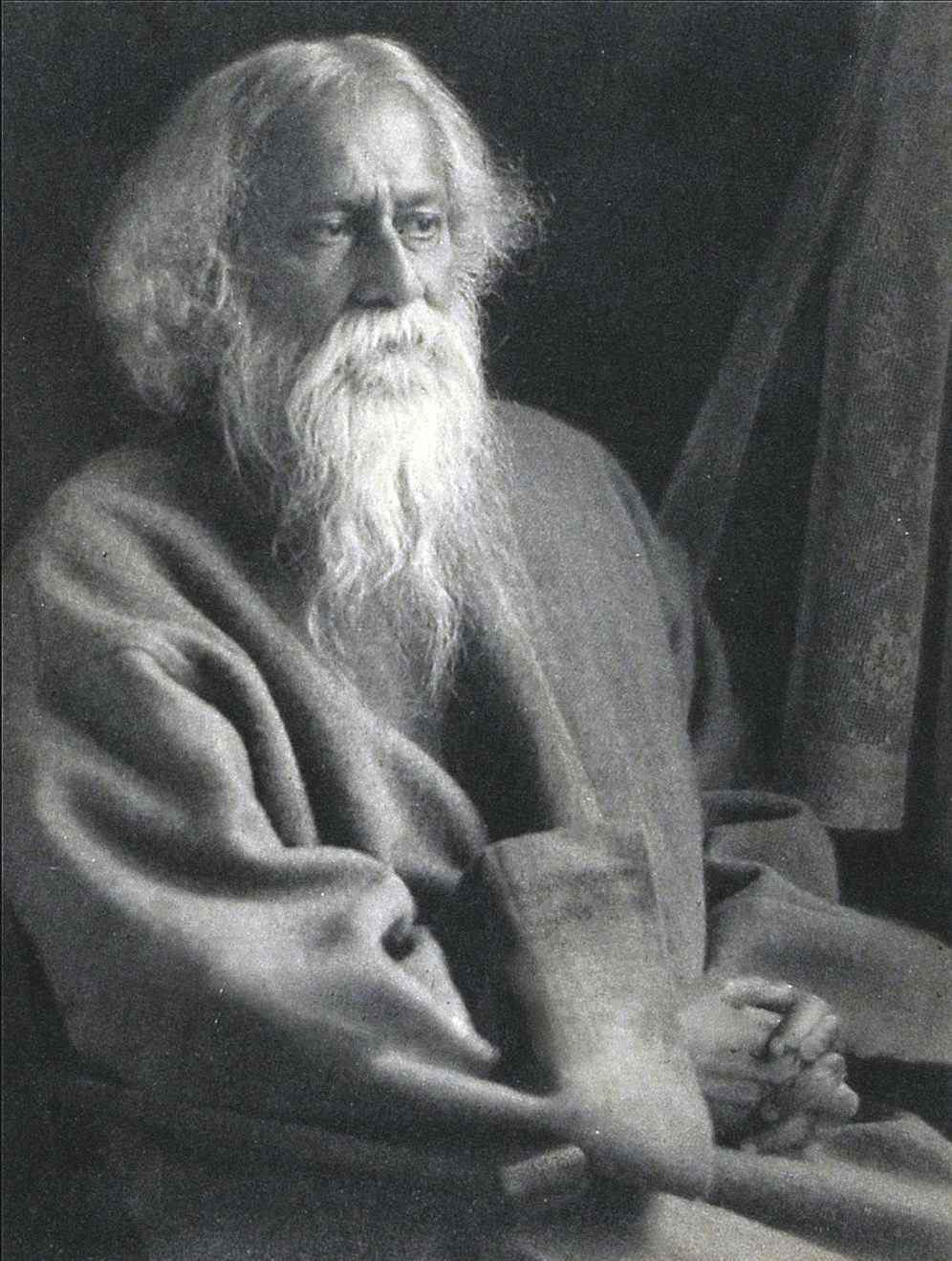Rabindranath Tagore was an Indian polymath—poet, writer, playwright, composer, philosopher, and social reformer. He reshaped Bengali literature and music, as well as Indian art with Contextual Modernism in the late 19th and early 20th centuries. In 1913 he became the first non-European to win the Nobel Prize in Literature. He also wrote the national anthems for both India and Bangladesh. And, he was a painter.
At 60, Tagore took up drawing and painting; successful exhibitions of his many works, which made a debut appearance in Paris upon encouragement by artists he met in the south of France, were held throughout Europe. He was likely red-green color blind, resulting in works that exhibited strange color schemes and off-beat aesthetics. His painting style was very individual, characterized by simple bold forms and a rhythmic quality, and later served to inspire many modern Indian artists. His first paintings were highly imaginative works, usually focusing on animals or imaginary creatures, which are imbued with vitality and humor. Human figures are depicted either as individuals with expressive gestures or in groups in theatrical settings, like in the watercolor we present today. In portraits produced during the 1930s, he renders the human face in a way reminiscent of a mask or persona. Landscape subjects represent the smallest output among Tagore’s works.
P.S. Would you like to know more about Indian art? Here are seven Indian modern painters you should know.


 Rabindranath Tagore
Rabindranath Tagore